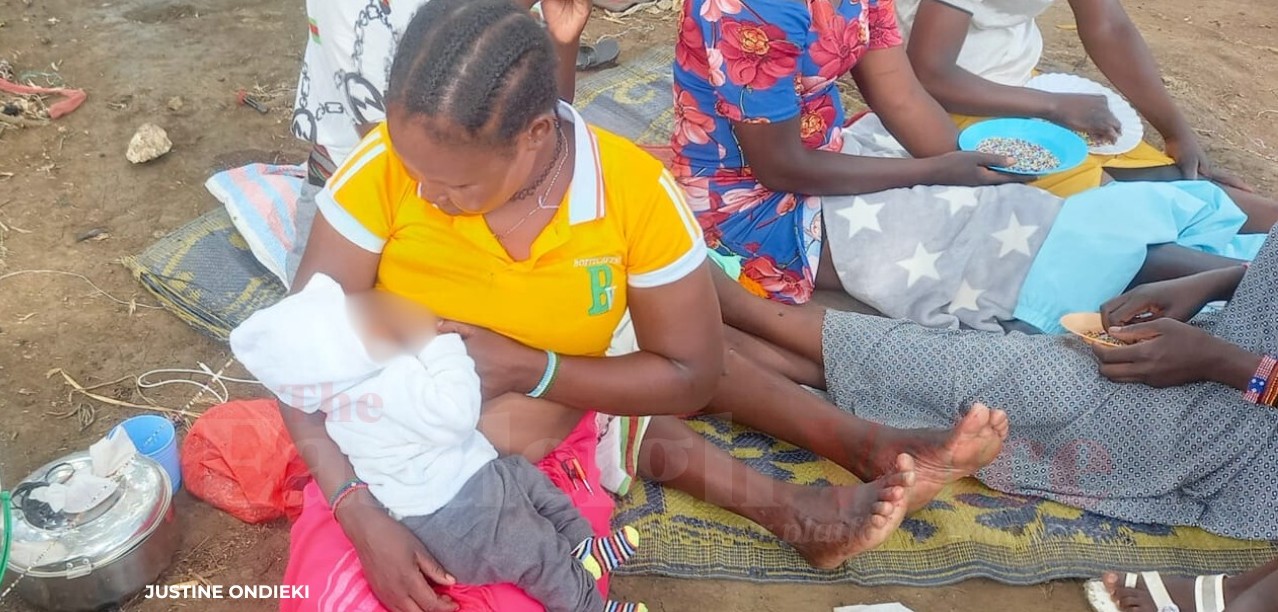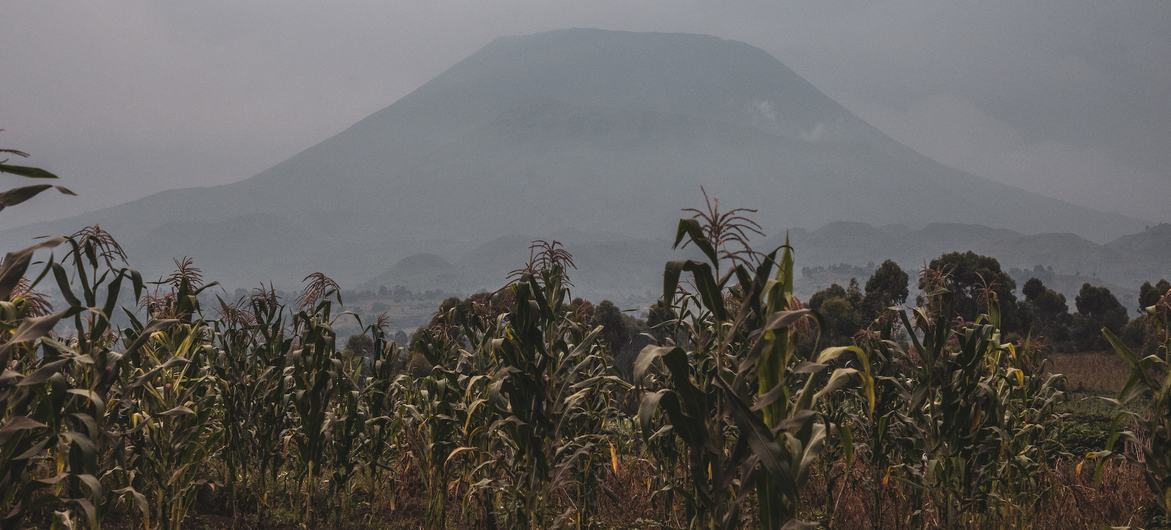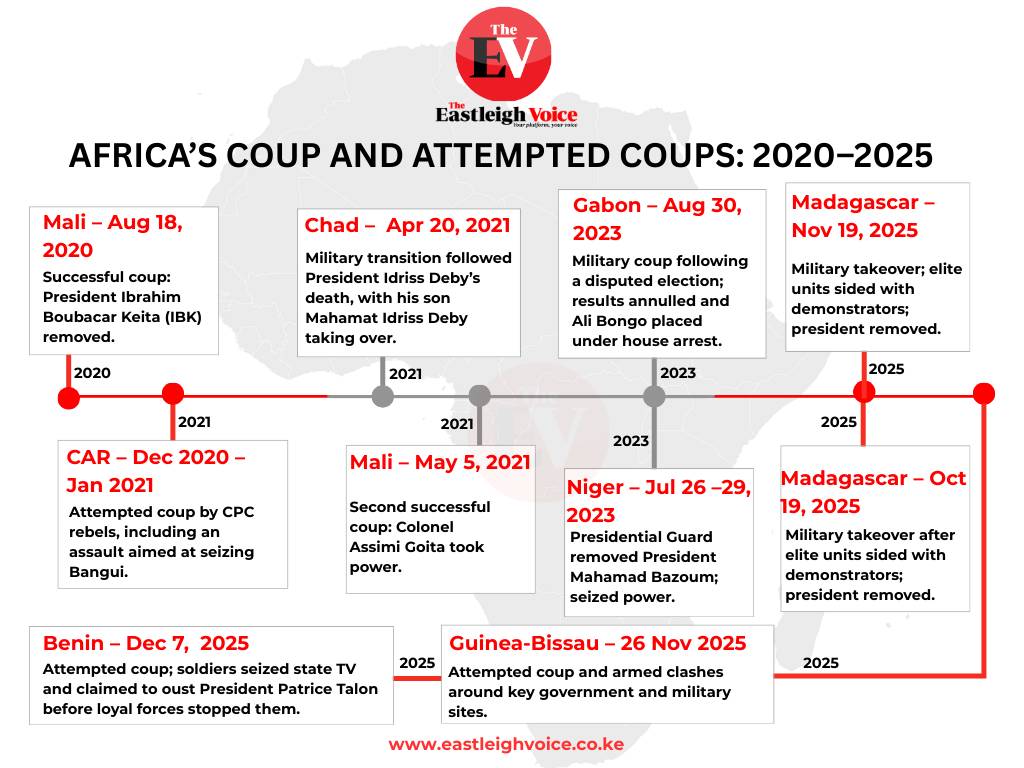From free to unaffordable: Why more Kenyan women are giving birth at home again

As the Linda Mama programme fades and hospital fees surge, thousands of expectant mothers in Kenya’s poorest communities are being priced out of safe deliveries.
For years, Jennipher Wanja*, a community health promoter, has walked from door to door in her Nairobi neighbourhood, one of the city’s informal settlements, checking on expectant mothers. She has become a familiar and reassuring presence — guiding women to attend antenatal clinics, promoting safe deliveries, and linking them to essential health services.
But lately, Wanja has noticed a worrying shift.
More To Read
- WHO calls for urgent action to achieve universal health coverage by 2030
- How Trump–Ruto health deal fills the void left after USAID exit
- KMTC students to start accessing Helb loans after final talks next week
- MPs demand SHA clears Sh10 billion in pending NHIF bills within three months
- Turkana marks World AIDS Day with stark warning over rising HIV infections
- TSC confirms shift to SHA cover for teachers from December 1
“Watching the gains we made in maternal health disappear is heartbreaking. More and more women are no longer attending antenatal clinics frequently or following basic precautions. They're too busy struggling to survive.”
In the settlement where she works, life is defined by hustle and uncertainty.
Many women spend long hours washing clothes, selling vegetables, or doing casual jobs just to afford food. Pregnancy, once viewed as a period requiring care and rest, has now become a time of financial anxiety.
“Most of them tell you they have to work harder now because they need to save for delivery,” Wanja explains. “They say, ‘Let me hustle so that I can pay when the baby comes.’ What they don't realise is that the journey of pregnancy — how you eat, how you rest, whether you attend clinics — can determine how your delivery goes.”
Consequences evident
The consequences are becoming evident. Cases of complications during childbirth are rising, and more mothers are giving birth at home or in poorly equipped clinics.
For years, Kenya’s Linda Mama programme provided free maternity services, enabling thousands of women to deliver safely in public hospitals. But as healthcare costs climb and funding becomes uncertain, more women are now being asked to pay out of pocket.
At public hospitals such as Pumwani Maternity, one of Nairobi’s largest maternity facilities, giving birth now costs between Sh7,000 and Sh10,000 for a normal delivery and around Sh30,000 for a Caesarean section. For families living on less than Sh150 a day, these costs are far out of reach.
“What seems like a small amount to some is impossible for these women,” Wanja says. “Moving from free delivery to paying Sh10,000 is a huge burden for someone who can barely afford a meal.”
Deeply concerned
As a result, women are turning to smaller, local private clinics that offer flexible payment options, where one can pay little by little before delivery or around Sh3,000 at the time of birth. On the surface, these seem affordable and convenient, but Wanja is deeply concerned.
“Many of these small facilities are not well equipped to handle emergencies,” she explains. “So, it becomes a matter of luck — if the labour goes well, fine. If there's a complication, it's another story.”
The risks are real. Some women develop complications that these smaller clinics cannot manage — leading to delayed referrals or, tragically, loss of life.
For community health promoters, the situation is frustrating. Their work depends on trust and consistent engagement with the women they serve. But with rising costs and fewer free services, that trust is eroding.
Unable to afford payments
“Even when we refer women to hospitals, they still have to pay,” Wanja says. “When they find out they can't afford it, they blame us. They feel we misled them — that we can't really help.”
Her work has grown harder. Convincing a mother to attend antenatal clinics, take supplements, and plan for delivery in a proper facility is nearly impossible when she cannot afford basic necessities.
“How do you tell a woman to go for a check-up when she hasn't eaten? To her, food is more urgent than a clinic visit.”
Another community health promoter, Sylvia Wangechi*, highlights a growing concern — the rising number of teenage pregnancies in her community. Some of these young mothers are fortunate to find help through local initiatives, but many are left to struggle alone.
SHA system unpredictable
“It's hard to understand how the SHA system works — it feels unpredictable. One girl gets support, another doesn't.”
She adds that the lack of clear and consistent planning is putting Kenya’s maternal health progress at risk.
“If proper planning isn't done, Kenya will lose the gains we've made over the years,” she warns. “The numbers are already going up — more women are giving birth without skilled care, more complications, more loss.”
Unsafe options
Health financing has become a larger crisis for many low-income communities, where poverty and health policy collide. The withdrawal of free maternity services and the high cost of delivery are pushing vulnerable women toward unsafe options.
“Sometimes all we can do is talk, encourage, and remind them that their health matters,” she says. “But it's painful when you know talking alone isn't enough — we've come so far to go backwards.”
A spot check with various community health promoters (CHPs) in Nairobi and other counties reveals that maternal care has become a significant financial burden. The rising cost of services now stands out as the greatest barrier to accessing proper healthcare.
The Social Health Authority (SHA) system appears to operate on a model of equality, where every mother is expected to pay the same — around Sh10,000 for a normal delivery and Sh30,000 for a Caesarean section. While this seems fair on paper, it fails to consider the vast differences in people’s financial realities.
Just enough for food
For women in Nairobi’s informal settlements, earning barely enough to cover food and rent, such costs are impossible. Treating everyone “equally” becomes unfair when not all women start from the same place. What they need is equity — a system that recognises different levels of vulnerability and provides greater support to those most in need.
The criteria for qualifying as an indigent patient — someone eligible for financial assistance — remain unclear and inconsistently applied. This confusion disproportionately affects poor urban women, many of whom fall through the cracks because they lack formal documentation or understanding of the process.
While Universal Health Coverage (UHC) promises equity — ensuring healthcare access based on need rather than ability to pay — the lack of a subsidised and targeted maternal healthcare system makes that promise difficult to realise. Without deliberate policies to address disparities, Kenya’s UHC ambition risks remaining a vision on paper rather than a lived reality for vulnerable mothers.
Moving away from Linda Mama
Initially, the Ministry of Health assured the public that Linda Mama would not be discontinued. However, appearing before the Senate on Wednesday, Health Cabinet Secretary Aden Duale confirmed that the government is transitioning away from the programme toward a household-centred health coverage model aimed at reaching more vulnerable families.
Duale said the shift was necessary to fix long-standing service delivery and financial management gaps that had weakened the effectiveness of free maternity care.
“While the programme played a key role in expanding access to free maternal care, it faced serious challenges that made it necessary to adopt a more comprehensive and sustainable model,” he told senators.
He added that the move to a household-based approach is backed by four new health laws passed by Parliament, which established the SHA and laid the groundwork for achieving Universal Health Coverage (UHC) in Kenya.
Before Linda Mama was introduced in 2013, the cost of delivery in public hospitals was a major barrier for many women, especially in low-income areas. The programme removed this burden by offering free antenatal care, delivery (both normal and C-section), and postnatal follow-ups — enabling more women to access skilled personnel and safe, facility-based births.
Linda Mama bridged gaps in the continuum of care by supporting mothers before and after delivery, improving access for rural and marginalised communities, and covering emergency procedures that prevented catastrophic health expenses. It also strengthened accountability through mandatory reporting by participating facilities, rebuilding trust between communities and health institutions — a trust that made it easier for health promoters like Jennipher Wanja to do their work.
Childbirth-related complications
In Kenya, an estimated 6,000 women die each year from pregnancy and childbirth-related complications — roughly 16 women every day. The country’s maternal mortality ratio stands at about 355 deaths per 100,000 live births. In the same period, around 33,500 newborns die each year — about 92 babies every day.
Globally, the crisis remains severe: about 260,000 women died from pregnancy or childbirth-related causes in 2023, averaging roughly 712 deaths daily. Newborn deaths are even higher, with around 6,300 babies dying every day within their first month of life.
The Ministry of Health has announced that it will begin renewing licences for hospitals and medical practitioners linked to high maternal mortality, signalling that negligence and malpractice will no longer be tolerated.
However, unless systemic challenges are addressed, unsafe practices and inequities in care may continue to endanger mothers’ lives.
Top Stories Today
















































